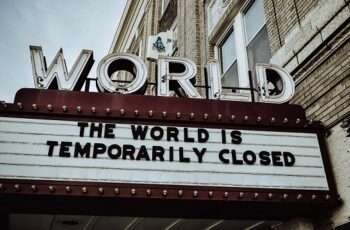It doesn’t matter if you have just started shopping online or have been buying your favorite stuff from online stores for a while – you would know that retail and how it’s carried out has changed significantly in the last few years. While there were more brick and mortar stores that ruled the roost in the last decade, most of them are wrapping up – like that one major toys company Toys R Us, simply because they are unable to compete with online competitors like Amazon who have had a growing client base. The advantages of online shopping are many, and that does make us ask the question as to what the future of retail stores actually are.
eCommerce and Retail Stores
You must have read many stories and heard unfortunate tales where e-commerce was responsible for the closure of traditional retail stores. It’s true that the early days of e-commerce saw a huge growth but after that the sales started declining gradually. Now the volume of sales on online platforms is quite low compared to brick and mortar retail stores. We do have some online giants like Amazon with its success story but the other companies in online selling are not fairing as expected.
Related: How to take your business online
Understanding the Change With the Help of Statistics
The share gains generated by online shopping are modest but not significant enough to affect the fate of the physical stores. Some industries like baby products experienced increased online transactions but did not match the exception due to the overall poor performance of the sector. For other products like beauty and wellness industries, both the online platforms and retail stores experienced growth in sales.
Let’s look at the numbers which will explain the situation much better. The online grocery shopping options have mushroomed heavily in the past few years. But it turns out that the industry merely manages to meet 2% of the share mark. 78% shoppers still buy their groceries from traditional grocery stores while for retail chain Walmart it is 56%. In comparison, only 5% of adult American population makes six online purchases in a year. That is still historically low considering the sale the industry achieves.
Related: Tips on how to choose the right Niche for your online business
We look into the annual report published by the Food and Beverage Department on grocery industry. It revealed that online grocery sales encountered a growth of 14T whereas physical grocery stores grew by 2%. Now the 14% growth of the online grocery industry translates to $1.6 billion of extra sales. But the 2% growth of physical grocery stores makes up $16 billion of additional sales. Even if we transfer the entire online growth to retail stores, they will account for a growth of only 2.2%.
It can be confidently said that e-commerce has not still affected the sales of the physical retailers. It will take a long time considering only 10% to 15% Americans make weekly online purchases.
Also, the growth rate of online shopping is coming down as a study reveals- 11 public department stores recorded a decline of online sales from 39.3% in 2012 to just 18.6% in 2018. The growth rate of another 22 public specialty stores reduced from 17.5% in 2012 to 9% in 2015.
“at the end, this means online shopping vs brick and mortar statistics shows it going to be a thing of power tussle but online shopping will affect offline stores but not too significant as sources out from Google search”

